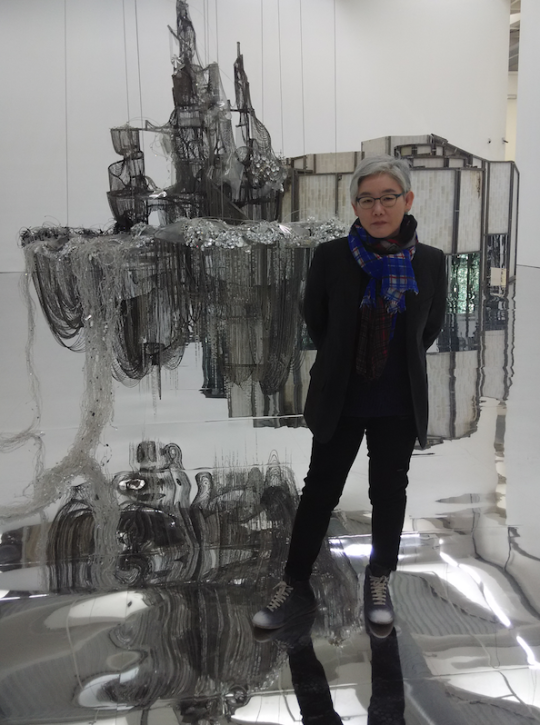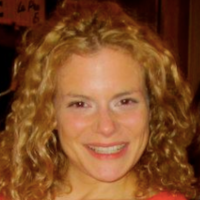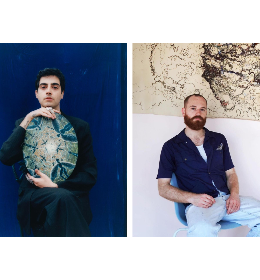As the Loire Valley’s nucleus for industrial community, St Etienne is a seemingly unlikely location for contemporary art. But not only do we have Lee Bul this spring, but also Jonathan Lasker, Serse, Yves Bresson and Massimiliano Camellini as well as Hye-Yeon Park and Seung Yong Song. Lee Bul, the South Korean artist, speaks with us in Saint Etienne about the underlying essence of her oeuvre.
No more raw fish
Lee Bul (born 1964), remembered for her MoMA exhibition that was forced to close early due to the rotting aroma of her bejewelled raw-fish, is now in Saint-Etienne for a more conventional take on contemporary art. The underlying message: no matter where we think technology is taking us, we always revert back to nature.
The South Korean artist is St Etienne’s star attraction. “I’ve been following the artist since 1992,” said Lóránd Hegyi, director general of the museum, “She brings an Asian vision with many references to Korean shamanism. Her creations bring together both nature and high technology.” And this is the first monographic exhibition of the artist in France since her show "On every new Shadow" at the Fondation Cartier in Paris in 2007.
Gracious, feminine, reflective
Looking down at our feet are millions of square mirrors, each bouncing back the illusion of her mammoth sculptures. Broken mirrors supposedly destabilize our vision, creating a dualism within an inside versus outside universe. These contrasting, conflicting themes run throughout her work here. “She lets us enter into an irrational universe,” the director continued, “it’s a vision between the real and unreal.” Six architectural compositions welcome the viewer in the main room, which lead into a throwback of Lee Bul’s 30 years of artistic creation.
If anything, MoMA projected the Korean artist further into the limelight. Her fish at MoMA, forever now encapsulated in the early stages of decomposition, represents the progressive decay of superficial beauty. Would Lee Bul do it again? “If someone invited me to do another one, I would.” Lee Bul went on to exhibit works at the Lyon Biennale (1997) and the Venice Biennale (1999). Her immense exhibition at Ikon Gallery in Birmingham (2014) would be hard to beat. Many of the same pieces are on display in Saint Etienne, but appear grey and dank against their backdrop. But this again is perhaps the point of Bul’s narrative, where beauty has a potential for corruption.

Lee Bul in front of her work inspired by Bruno Taut's Sternbau
A naive vision of the future
A giant chandelier represents a fantasy landscape. Inspired by German modernist architect Bruno Taut (1880-1938), we ask Lee Bul about her oeuvre based on Taut’s work Sternbau. “He (Taut) tried to make some kind of ideal of society,” Lee Bul said, standing in front of the piece, “so his plan, his drawing and his project is to keep going to the end, even if it is not possible.” The idea of the never-finishing, perhaps Gaudiesque style, runs parallel to the notion of never ending technology: “That’s the really amazing idea, is that we can build a very ideal society, it’s an environment, it’s like a planet.” The structure is made from an internal metal structure, assembled with chains, mirrors, plastic film and crystals. It’s a very feminine design, yet also twists the beauty into a poetic science-fictional utopia.









